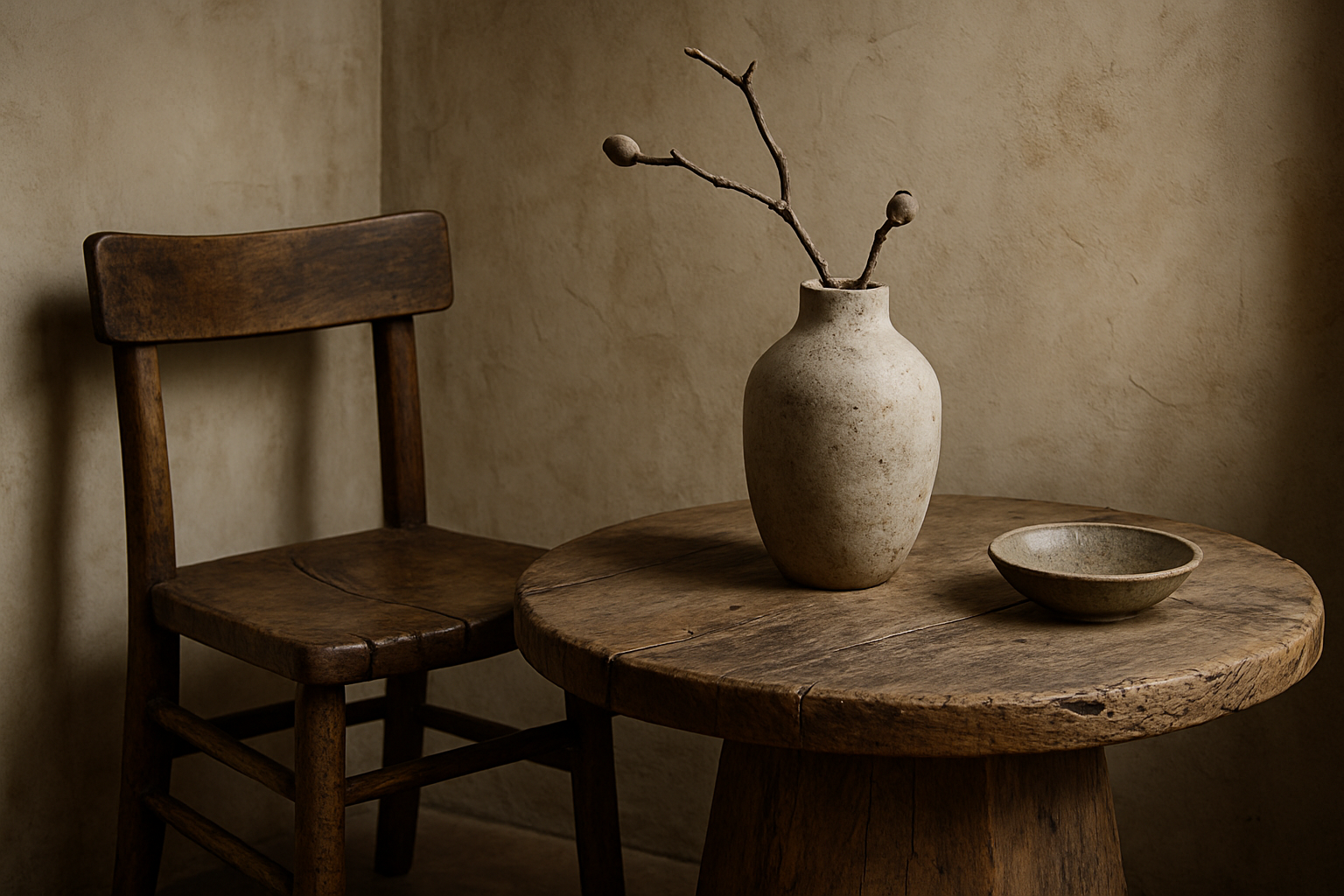Discovering the Beauty of Wabi-Sabi Design: An Exploration of Imperfect Elegance
Introduction: In a world that constantly chases perfection, there's a unique design trend that embraces the beauty of imperfections. It's called Wabi-Sabi, a traditional Japanese aesthetic that finds charm in transient and incomplete things. This design approach is a breath of fresh air in an industry often obsessed with flawless finishes and symmetrical layouts. Let's dive into the intriguing world of Wabi-Sabi, a design philosophy that is not just a trend but a mindful way of living.

A Glimpse into the Roots of Wabi-Sabi
Wabi-Sabi is deeply rooted in the Japanese Zen Buddhism philosophy. The term “Wabi” signifies rustic simplicity and quietness, while “Sabi” represents taking pleasure in the imperfect. This aesthetic values weathered, worn and aging items, reflecting a profound respect for the passing of time and the beauty of the natural aging process. The Wabi-Sabi philosophy encourages us to embrace imperfections and see them as unique attributes rather than flaws.
The Essence of Wabi-Sabi in Modern Homes
With the rise of consumerism, Wabi-Sabi offers a refreshing perspective. It deviates from the usual shiny, new, and perfect home decor elements and instead favors items that are earthy, organic, and flawed. This design trend involves using natural materials like wood, stone, and metal in their raw, unpolished form. It’s about creating a space that feels lived-in, warm, and serene, a space that celebrates the beauty of life’s impermanence and imperfection.
Practicality and Appeal of Wabi-Sabi
Wabi-Sabi is more than just a design trend; it’s a lifestyle. It encourages people to slow down and appreciate the beauty of the ordinary and the natural. As such, it’s a perfect fit for those seeking simplicity and tranquility in their homes. According to a 2019 report by Architectural Digest, Wabi-Sabi has been gaining popularity among homeowners and designers who are drawn to its minimalist, nature-inspired aesthetic and its emphasis on sustainability and mindfulness.
Wabi-Sabi and Daily Living
Incorporating Wabi-Sabi design in homes is about embracing authenticity. It’s about choosing handcrafted items with natural imperfections over mass-produced, flawless items. It’s about letting a wooden table age gracefully with scratches and stains that tell a story, or letting a copper sink develop a natural patina over time. It’s about appreciating the beauty of a cracked ceramic vase, or the faded colors of an old handwoven rug. This design philosophy enhances daily living by promoting mindfulness and appreciation for the small, simple moments of life.
A Balanced Perspective on Wabi-Sabi
While Wabi-Sabi encourages embracing imperfections, it does not mean living in a rundown or neglected space. It’s about finding a balance between the old and the new, the perfect and the imperfect, the polished and the weathered. It’s about appreciating the beauty in both a brand-new handcrafted ceramic bowl and an old wooden table with a rich patina. This balanced approach ensures a lived-in but comfortable and aesthetically pleasing space.
The Wabi-Sabi trend is a testament to the evolving perspectives in home design. It’s a celebration of the beauty in imperfection, a nod to the natural and the authentic, and a step towards mindful living. It’s a design philosophy that not only enhances our homes but also enriches our lives.





